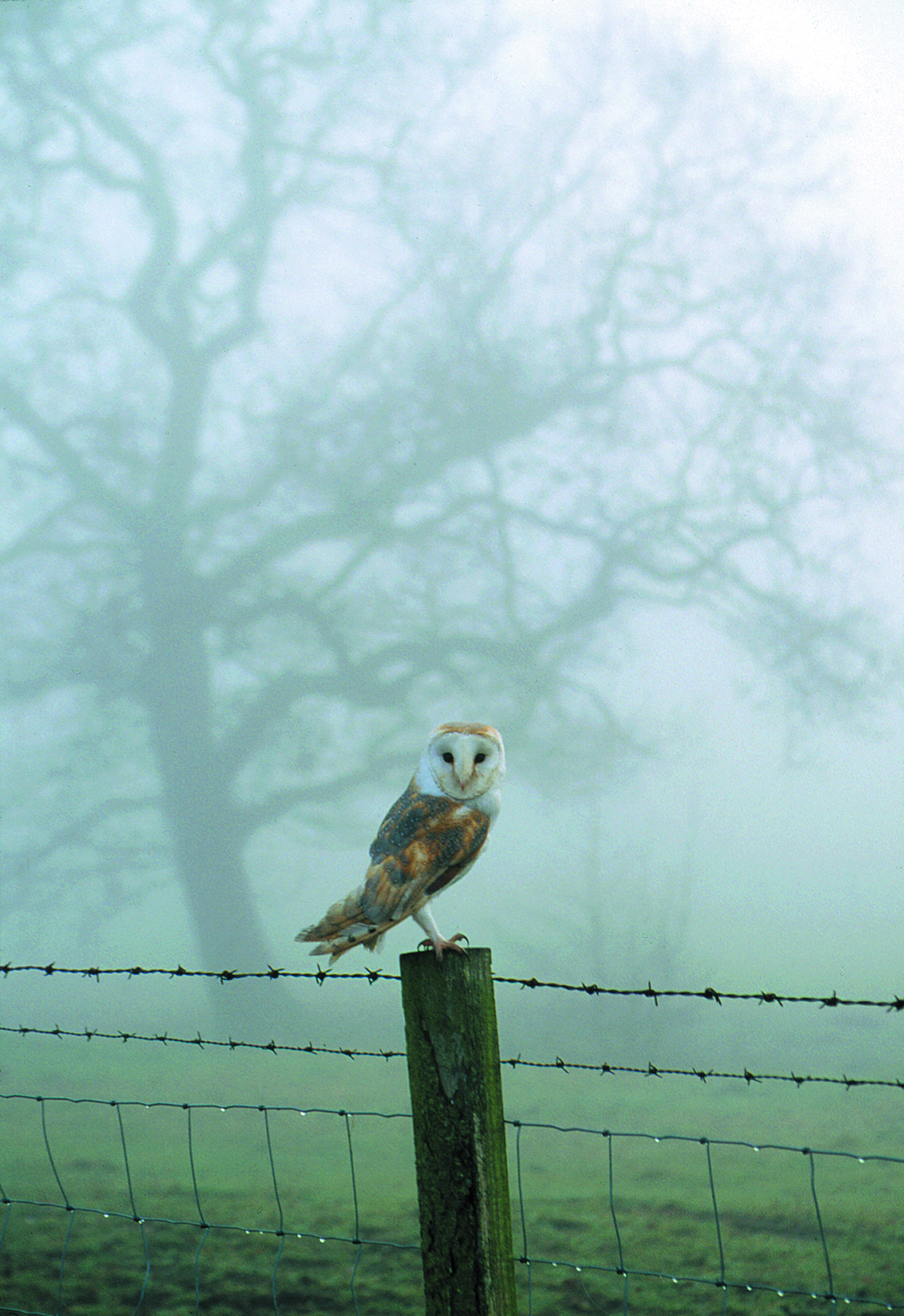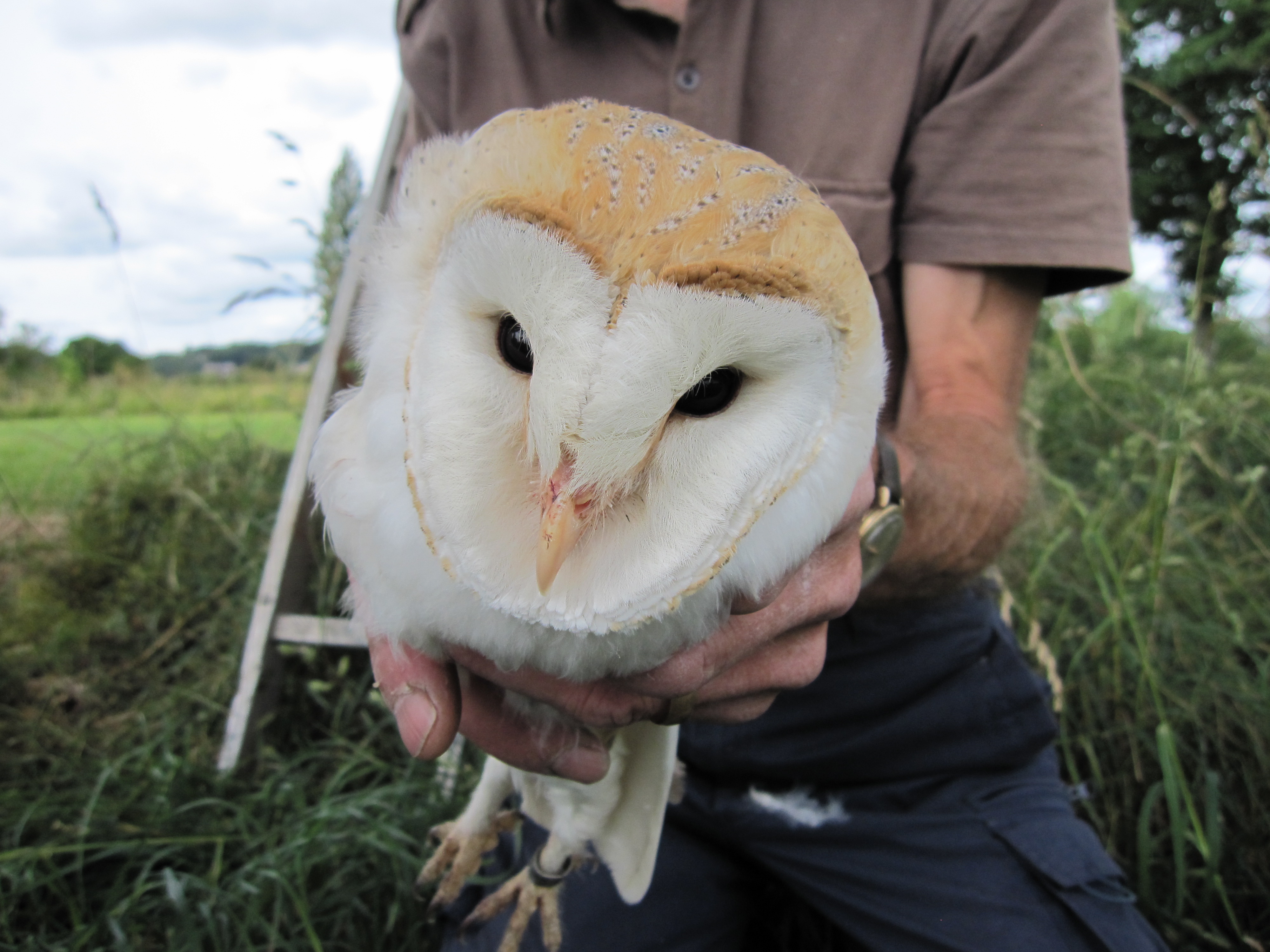Biodiversity
Related Links
Latest News
A Starring Role for Nantclwyd’s Lesser Horseshoe Bats
22.05.2015
Living Landscape Brought Back to Life
05.12.2014
More Information
To find out what is being done to help barn owls in Denbighshire, visit our project pages.
Facebook Page
Barn owl
This beautiful bird is found across the globe, but in the UK the species is under threat as its habitat is degraded and nest sites lost.
 Description and identification: The barn owl has a distinctive appearance with a heart-shaped face, buff back and wings, white underparts and large black eyes. In flight the barn owl appears white. Its call is an eerie shriek, and shouldn’t be confused with the tawny owl’s hoot.
Description and identification: The barn owl has a distinctive appearance with a heart-shaped face, buff back and wings, white underparts and large black eyes. In flight the barn owl appears white. Its call is an eerie shriek, and shouldn’t be confused with the tawny owl’s hoot.
Habitat: These are birds of open country, rather than woodland. The most important habitat for barn owls is rough tussocky grassland, where its prey (small mammals) can be found in high numbers. Barn owls can also be seen hunting in farmland, road verges, heaths and marshes.
Diet: The barn owl’s diet consists of small mammals including voles, mice and shrews. Field voles are particularly important. They hunt by flying slowly back and forth looking, and especially listening, for their prey. Once a small mammal is located, they hover above to pinpoint it, before dropping to pounce with their sharp talons outstretched. After killing the prey and swallowing it whole, barn owls regurgitate the bones, teeth and fur in the form of a pellet. Sometimes barn owls also hunt from perches.
Ecology and reproduction: Barn owls are mainly ‘crepuscular’, meaning they are active at dawn and dusk. Sometimes they are active throughout the night, and more rarely can be seen during the day. Barn owls nest in hollow trees or agricultural buildings (also in artificial nest boxes). Four to six white eggs are laid in April or May, which are incubated by the female. The male helps out by feeding the female during this period. Once hatched, the female remains with the chicks in the nest until the youngest is around three weeks old. The owlets are able to fly by about ten weeks and by autumn disperse to establish their own home-ranges.
 Distribution: The barn owl is one of the most widely-distributed birds worldwide, found in Europe, Africa, Asia, the Americas and Australasia. In Britain barn owls are only absent from the Highlands and far north of Scotland. In Denbighshire the distribution of barn owls is determined by the availability of suitable habitat and nesting sites.
Distribution: The barn owl is one of the most widely-distributed birds worldwide, found in Europe, Africa, Asia, the Americas and Australasia. In Britain barn owls are only absent from the Highlands and far north of Scotland. In Denbighshire the distribution of barn owls is determined by the availability of suitable habitat and nesting sites.
Threats: The population of barn owls in the UK is thought to have started declining in the mid-19th Century, due to persecution. Since then the species has faced a number of threats including the use of organochlorine pesticides in the 1950s and ‘60s, increased road traffic, loss of old trees, changing agricultural practices and inappropriate development. Harsh winters also have a big impact on the survival of barn owls.
Status: The barn owl is protected under UK law and is a priority for conservation action in Denbighshire.



